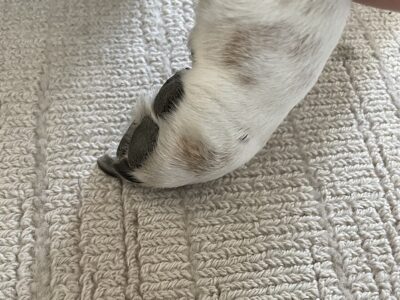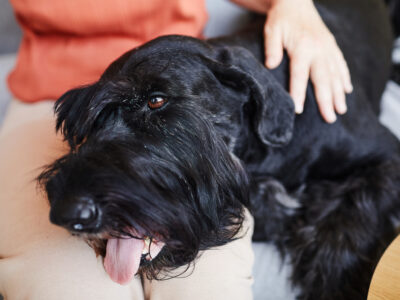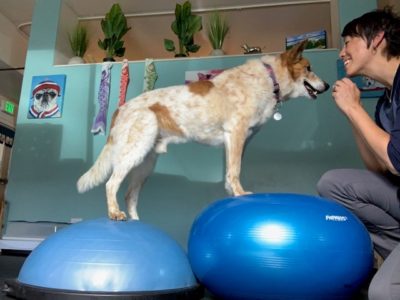
Table of Contents[Hide][Show]
Dog urinary tract infections are a common problem that makes life miserable. When bacteria enter the bladder, it causes a host of symptoms that range from pain and pressure to fever and bloody urine. Healthy, able-bodied dogs might experience a handful of UTIs during their life, but for paralyzed dogs and those with chronic health problems, the discomfort can be ongoing and even life-threatening.
As their guardian, it’s hard to watch your paraplegic dog strain to “go” because of a UTI. But the spine problem that keeps a pup from walking also prevents the bladder from working like it should. The result is incontinence. It leaves some dogs without any bladder control and others with problems of leaking and dribbling.
The good news is there are three key elements to stop dog urinary tract infections from recurring. I’m not talking about a new product or a gimmick. These are three steps we can do as our dog’s caretaker to keep UTIs at bay.
This post may contain affiliate links. Please see our disclosure policy.
How the bladder works
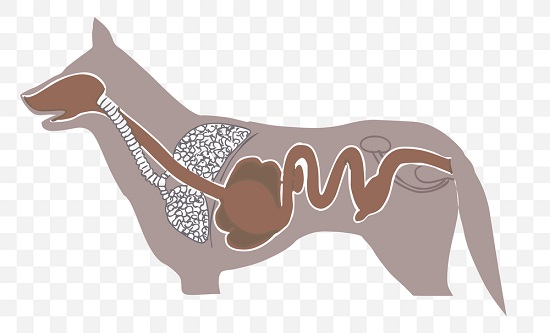
To understand the key elements, it’s important to know how the bladder works.
The urinary tract is made of the kidneys, ureters, bladder and the urethra. The kidneys constantly produce urine which is moved into the bladder by the ureters. As urine reaches the bladder, it expands until it’s full and is emptied by the body.
A healthy bladder is sterile and free of bacteria. It maintains that health with a neutral pH level. That means a chemical in the bladder called hydrogen doesn’t contain too much or too little acid.
The bladder does best with a neutral pH level of 6.5 to 7.0. Maintaining this level is the first key element to stop urinary tract infections in your dog.
Healthy dogs have no trouble maintaining the right pH level. Incontinent dogs run into trouble. It happens because some or all of their urine remains in the bladder after they pee, causing the pH level to change.
Making sure your dog’s bladder is completely empty after urinating is the second key step to prevent UTIs.
Why incontinent dogs retain urine:
- They can’t fully empty their bladder without assistance.
- Dogs leak or dribble urine.
- They’re unable eliminate, at all, without help.
This last problem is called “excessive bladder tone” and it’s really the opposite of what we think of as incontinence. Dogs with the condition store a lot of urine because they can’t contract their bladder to release it.
The problem is seen most often in dogs who have spinal lesions or injuries to their back at the waist or higher.
Sophie’s experience with a urinary tract infection

My dog Sophie had excessive bladder tone. Our vet told me when her bladder became too full it would eventually spill over, but that never happened in 5 years. Instead her lower belly would get more and more distended and the muscles in the area became rock hard. We solved the problem, for the most part, by manually expressing her 3-4 times a day.
Sophie’s bladder tone caused her to have a terrible UTI early in her disease. It happened because I left a small amount of urine behind each time she was expressed.
Unfortunately, I missed the signs that an infection was brewing. My only clue was that it became extremely hard to express her. It was as if her body was fighting me. Then one day, a mixture of blood and urine came pouring out and I knew we were in trouble.
Several strong antibiotics were prescribed and a month later Sophie was feeling like herself again. The experienced taught me to pay attention to the amount of urine she released and we never had another problem.
Symptoms of a urinary tract infection
Early signs of a UTI for your dog are quite different than the symptoms humans display. They’re subtle and can be easily missed or confused with other health problems.
Pet parents should watch for these early indicators:
- Drinking large amounts of water
- Urinating small amounts at a time
- Straining to pee
- Urinating frequently and in multiple spots
- Peeing in the house or in areas off-limit in the yard
- Intense licking in the area

Get the Essential Guide
The Essential Guide of Products for Handicapped Dogs e-book is a labor of love for me. I wrote it to answer your most pressing questions about where to find the best products for your wheelchair dog. You’ll find products you didn’t know existed and each will improve your dog’s quality of life. Print a copy and keep it by your side.
Advanced signs of UTI include:
- Blood in the urine
- A strong ammonia odor coming from your dog
- Lethargy
- Loss of appetite
- Crying or whimpering
If one or more of these symptoms are present, contact your vet immediately. A diagnostic workup is mandatory.
What to expect during the veterinary exam

The diagnosis for a urinary tract infection begins with a physical examination and a urinalysis to test for the specific type of bacteria present in your dog’s bladder. A urine sample will most likely be collected during the exam or your vet might ask you to bring one from home. If that’s the case, instructions should be given about the best way to collect the sample and keep it sterile.
Bloodwork might also be included in the initial work up.
If a UTI is confirmed, antibiotics will be prescribed to kill the bad bacteria. It’s important that your dog finish the medication so the infection doesn’t travel to vital organs like the heart or kidneys.
Most urinary tract infections clear up with one or two rounds of antibiotics, but for some dogs who are prone to the problem, the treatment time can last much longer.
If this isn’t your dog’s first UTI
If your dog has experienced multiple urinary tract infections, you might want to talk with the veterinarian about how your pet’s incontinence is contributing to the problem.
For instance, if the infections are forming because of retained urine in the bladder, ask your vet to teach you how to manually express your pup. This is the best technique to prevent UTIs and I strongly urge pet parents to learn it.
That said, be sure you get a hands-on demonstration. Learning the technique can be challenging at first and you’ll want to know all of the details such as where to place your hands, how hard to squeeze and what a full bladder feels like.
And if UTIs are coming back because of a leaky bladder, talk with your vet about medication to help the situation. Proin is an oral medicine that many pet parents love. It works by tightening the urethral sphincter to control dribbling.
Click here to read: How to Choose The Right Dog Diaper
The third key element to stop dog urinary tract infections
Before I discuss the steps you can take to prevent UTIs in your dog, there’s one more key element you need to know. Urinary tract infections happen more frequently to dog’s who are dehydrated.
It’s key to make sure your incontinent dog has access to plenty of fresh, clean water.
When dogs aren’t fully hydrated, the urine in their bladder becomes concentrated and changes the pH level.
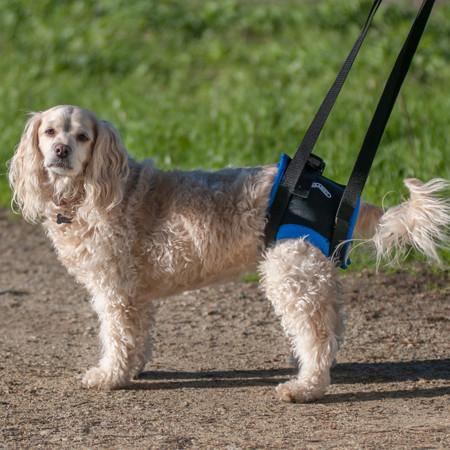
My favorite harnesses for disabled dogs.
Implementing the three key elements
Now that you know how to stop UTIs, here are actions you can take to help your dog.
How to maintain a neutral pH level of 6.5 to7.0
The key is to test your dog’s urine at home on a regular basis. Urinalysis test strips for dogs are easy to find online and they’re inexpensive.
All that’s required is for you to “free catch” your dog’s urine in a clean or never used plastic container. Free catch means the urine is collected into the container, as your dog pees. If it hits the ground first, the sample is considered contaminated.
Once you’ve collected the sample, submerge the testing strip into the urine for several seconds. Then remove the paper strip and wait for 30 seconds as it changes color. Next compare the color to the chart that comes with the strips.
If the color shows that a UTI is brewing, cover and refrigerate container until you can bring it to your vet.
Testing your dog’s urine often has lots of benefits:
- It helps you learn your dog’s individual normal pH level range.
- You’ll be able to notice the slightest change.
- You can work with your vet on diet and supplements to get the pH level to as neutral as possible.
How to make sure your dog’s bladder is fully emptied
The best way to do this is by learning how to manually express your pup’s bladder. The technique takes a little practice, but it’s a great way to become familiar with how your dog’s body feels when the bladder is full and when it’s empty.
Keeping your dog well-hydrated.
Provide easy to reach water bowls in several locations around the house and yard. Some paralyzed dogs get tired easily. They might give up scooting over to a bowl of water if it’s on the other side of the house.
It’s also important for the bowl to be clean and filled daily with fresh cold water.
Click to read: IVDD – Understanding the Condition
Other ways to prevent UTIs
Here are tips Sophie’s vet gave me about stopping urinary tract infections:
- Keep your dog on a strict bathroom schedule. We expressed 4 times a day: before breakfast, midday, after dinner and before bed.
- Perfect an expressing technique that works best for you and your pup.
- Watch for a change in the color of the urine. Bright yellow points to dehydration and a dark color indicates an infection.
- Look for any signs of discomfort in your dog while urinating or being expressed.
- If your dog wears a diaper, change it often so bacteria doesn’t grow. Clean the area with baby wipes.
- If you think your dog is developing a UTI, ask your vet to culture the urine.
- Talk with your vet about getting a second opinion from a Veterinary Internist if there’s a problem with chronic or resistant UTIs. Procedures like bladder flushing or a change of diet can help.
- Discuss medications. Baclofen is a drug used to improve the bladder health of human paraplegics, but it can be prescribed for dogs.
Holistic supplements to stop dog urinary tract infections
(Check with your veterinarian before administering supplements to your dog.)
- Vitamin C – Canine Journal recommends 500mg crushed and sprinkled over your dog’s food once a day for 7 days to stop a UTI.
- D-Mannose – This is a supplement made from cranberries. It moves through the bladder quickly to promote good health.
- Cranberry Extract – It protects the bladder wall and is thought to prevent urinary leakage.
- Oregano Capsules – Oregano is an antimicrobial that fights bacteria such as E. coli.
- Apple Cider Vinegar – This is used to neutralize pH levels.
For more details to stop UTI click on our story: Favorite Tips to Treat Dog Urinary Tract Infections and Urine Scald.
Photos: Pixabay and Depositphotos


